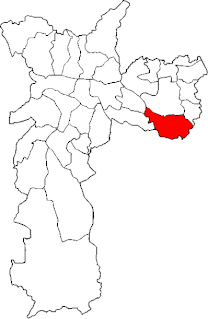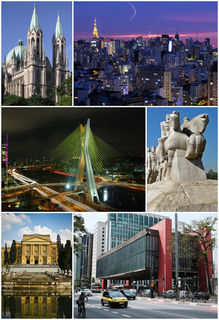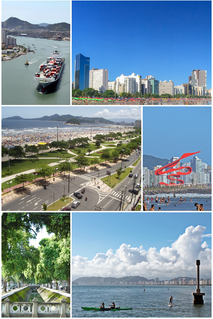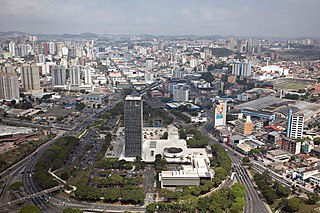| Iguatemi | |
|---|---|
 Location of Iguatemi in São Paulo | |
| Country | Brazil |
| State | São Paulo |
| City | São Paulo |
| Government | |
| • Type | Subprefecture |
| • Subprefect | Ademir Aparecido Ramos |
| Population (2005) | |
| • Total | 117,000 |
| HDI | 0.751 - medium |
| Website | Subprefecture of Iguatemi |
Iguatemi is a district in the subprefecture of São Mateus in the city of São Paulo, Brazil.

The Subprefecture of São Mateus is one of 32 subprefectures of the city of São Paulo, Brazil. It comprises three districts: São Mateus, São Rafael, and Iguatemi.

São Paulo is a municipality in the Southeast Region of Brazil. The metropolis is an alpha global city and the most populous city in Brazil, the Western Hemisphere and the Southern Hemisphere, besides being the largest Portuguese-speaking city in the world. The municipality is also the Earth's 11th largest city proper by population. The city is the capital of the surrounding state of São Paulo, the most populous and wealthiest state in Brazil. It exerts strong international influences in commerce, finance, arts and entertainment. The name of the city honors the Apostle, Saint Paul of Tarsus. The city's metropolitan area, the Greater São Paulo, ranks as the most populous in Brazil and the 12th most populous on Earth. The process of conurbation between the metropolitan areas located around the Greater São Paulo created the São Paulo Macrometropolis, a megalopolis with more than 30 million inhabitants, one of the most populous urban agglomerations in the world.

Brazil, officially the Federative Republic of Brazil, is the largest country in both South America and Latin America. At 8.5 million square kilometers and with over 208 million people, Brazil is the world's fifth-largest country by area and the fifth most populous. Its capital is Brasília, and its most populated city is São Paulo. The federation is composed of the union of the 26 states, the Federal District, and the 5,570 municipalities. It is the largest country to have Portuguese as an official language and the only one in the Americas; it is also one of the most multicultural and ethnically diverse nations, due to over a century of mass immigration from around the world.
The area where the district is located, until the end of the 1960s, was composed of sites and farms and was known as Guabirobeira and Mall. The first lots were Villa Eugenie, Jardim São Gonçalo, Garden Roseli Marilú & Garden (opened in 1965) followed by others in the 1970s.
The district's population is estimated at about 115,000 inhabitants and is predominantly mestizo. It is a neighborhood made up of citizens originating in northeastern Brazil, from Spain, from Japan, mostly industrial workers in the region of Mooca, Ipiranga and ABC. There are also some descendants of Japanese and Lebanese who excel in the trade.
The district will be serviced in the near future by a monorail system.














